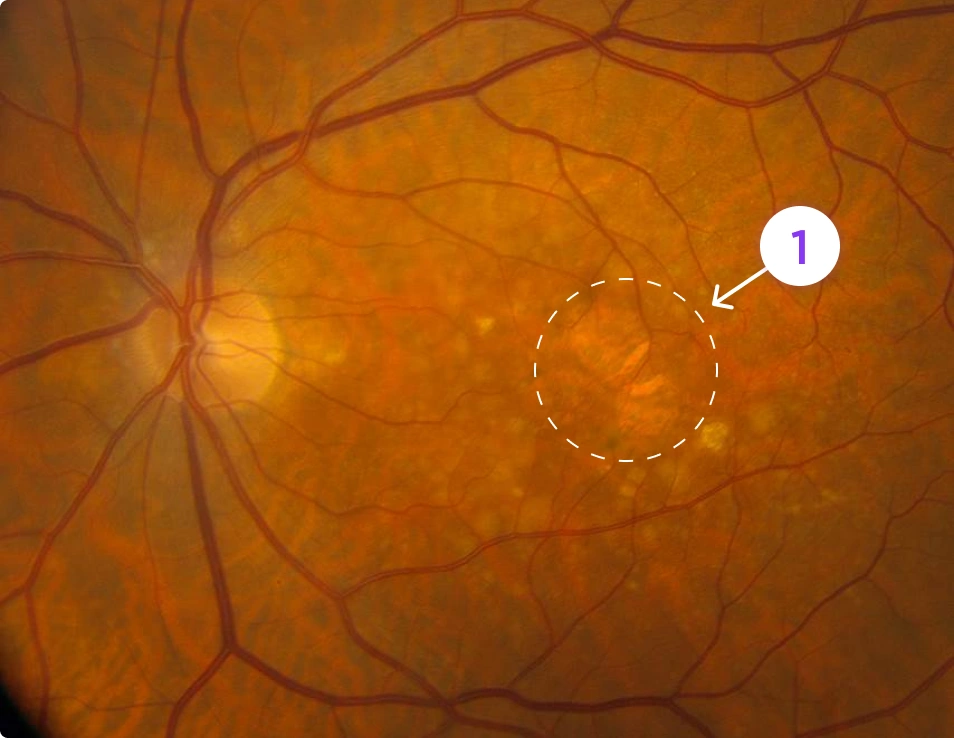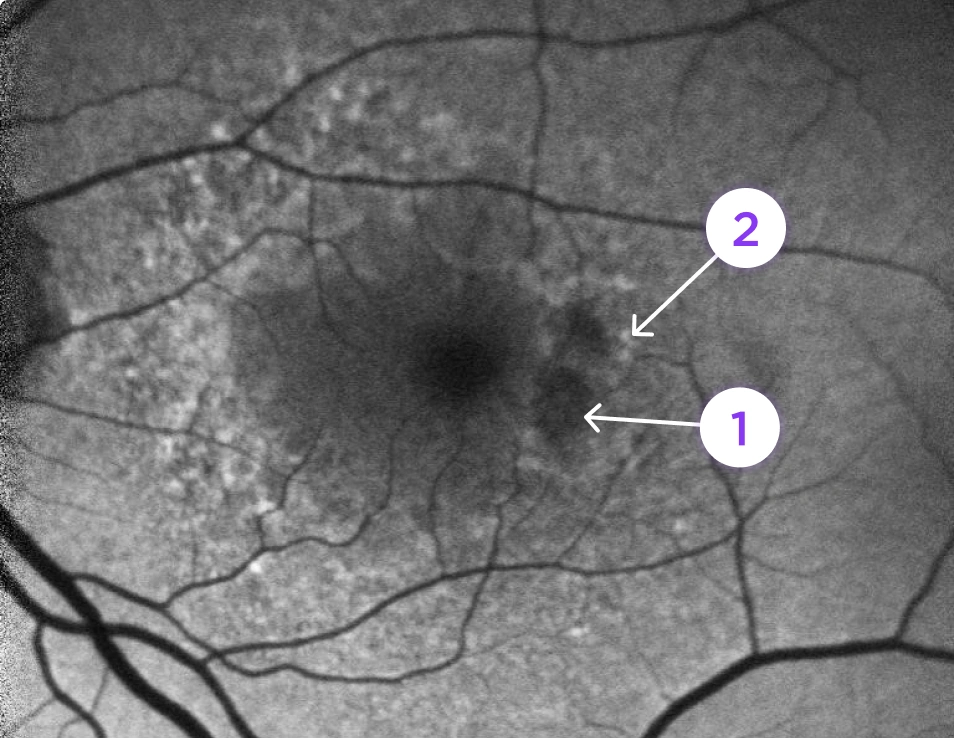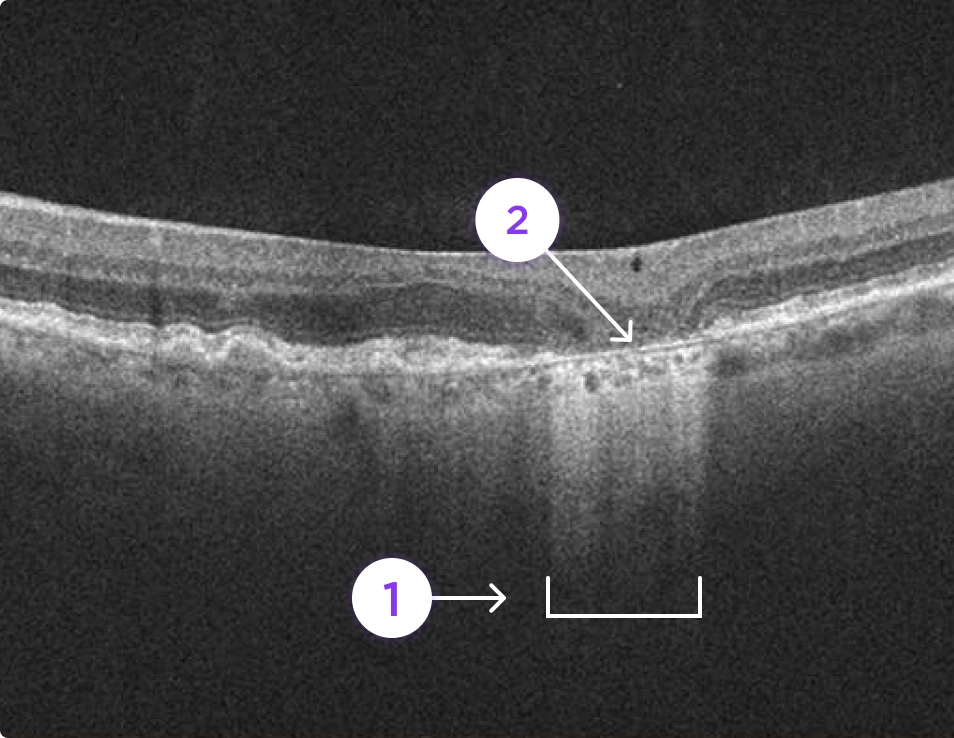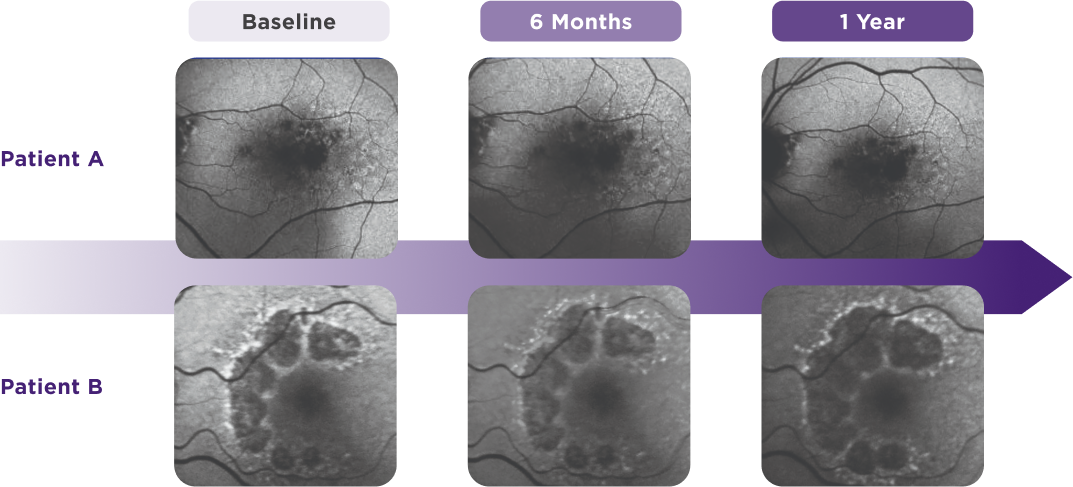
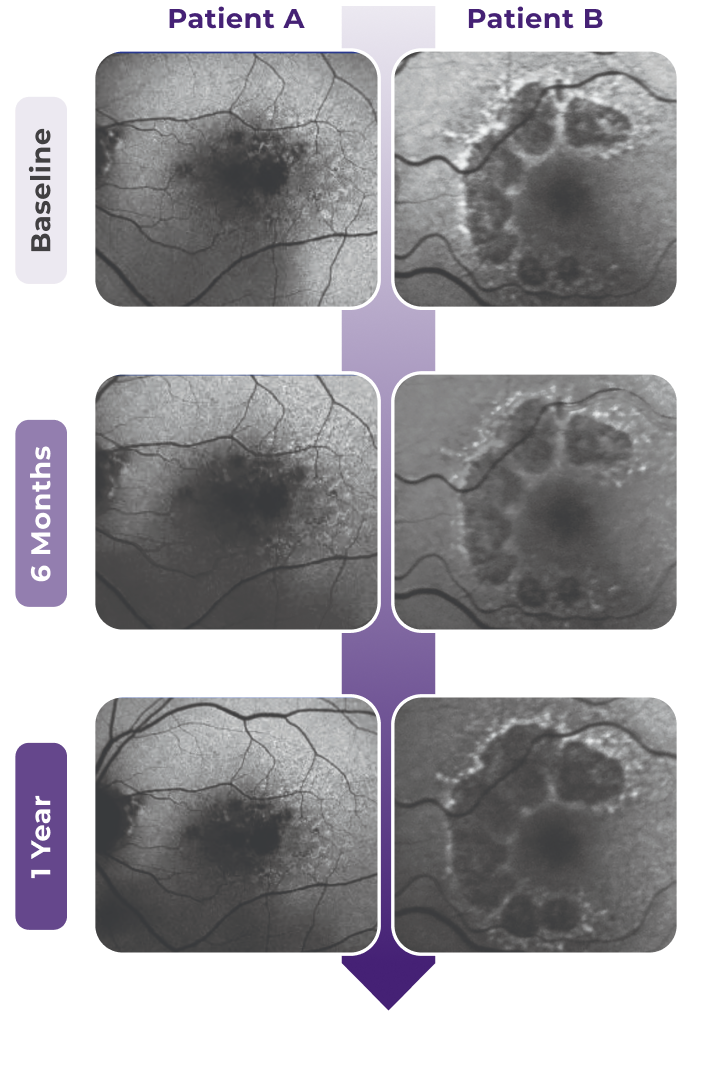
77% of patients said the disease impacted their vision faster than they expected13*
In only 2 years, ~50% of patients with GA lose 2 lines of vision10†
Don't delay. Your patients' vision will never be better than it is today.
Your guidance. Their moments.
A partnership that could preserve more vision for longer

It is important for patients to have conversations with their doctor. I have so much more hope since starting treatment.”
– Jan, GA patient

My patients tell me they feel empowered that they're doing something to slow the progression of GA.”7
– Dr. Esther Kim
Patients want to be proactive about their GA
In a survey of people with self-reported GA,
84% of them said they would try a new treatment to slow GA in hopes of preserving their vision for longer13*
Time lost is vision lost, but there's something you can do
*Results from a telephone survey of 203 individuals with self-reported GA. Participants were compensated for their time and the survey was sponsored by a pharmaceutical company.
†Retrospective analysis of the Chroma, Spectri, and Proxima A trials, including 2006 study eyes from patients with bilateral GA.
GA=geographic atrophy.
